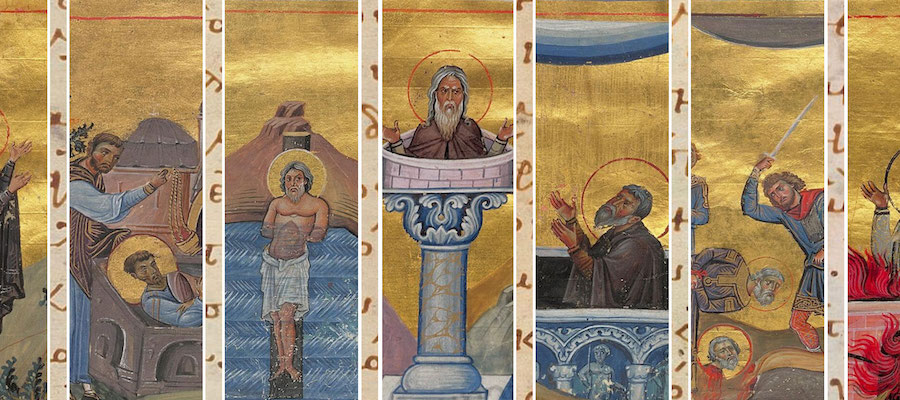Participants
Vincent Déroche (Centre de Recherche d'histoire et Civilisation de Byzance, Centre National de la Recherche Scientifique (CNRS), Paris)
Objects and Materiality in Miracle Tales
Objects in hagiography are virtually infinite in number, since the genre implies long and detailed narratives; but in the collections of miracle tales, especially those of the Early Byzantine period, it is possible to isolate some specific categories of objects: objects through which the miracle is supposed to happen, objects usually manipulated in the expectation of the miracle, objects needed during the pilgrimage or the incubation. We shall disregard well-known categories (relics, pilgrimage tokens) to focus on objects that remain so to say in the margins of the miracle but are nonetheless necessary to the economy of its narration.
Anna Lampadaridi (Trinity College, University of Oxford)
Organizer and chair
Markeěta Kulhaěnkovaě (Masarykova Univerzita, Brno)
The Ambivalent Approach to Books and the Written Word in Byzantine Edifying Stories
In my contribution, I will explore the approach to books and more generally to the written word in the edifying stories written down between the 4th and the 10th centuries. Taking as a starting point the analysis of the role of the Scripture in the early monastic communities by D. Burton-Christie (1993), I will investigate how books and written messages are valuated, described and used in the narratives. My aim is to show how this approach varies depending on the character and the social background of the authors and on the development of the genre itself.
Fotis Vasileiou (Ionian University, Corfu)
Materialities of Violence in Byzantine Beneficial Tales
While authoritative Lives of saints narrate the deeds and sayings of distinguished holy women and men, beneficial tales usually focus on the realities of common people, either monks, priests, or laymen. This paper will concentrate on Byzantine beneficial tales of everyday violence. After exploring the different material realities of violence in these stories (landscapes, instruments, garments etc.), as well as their function in the narrative, I will discuss their role in the Byzantine “imaginaire”.
